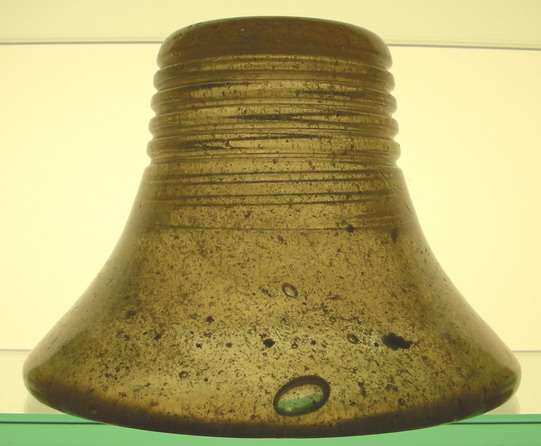Fred Locke Glass No. 331
By Elton Gish; posted September 17, 2006
View Original: Click to zoom, then click to magnify (541 x 446) 71KB

|
This is a middle skirt to Fred Locke's glass No. 331 like the Brookfield CD 365. It was a Brookfield special order by Fred Locke using his "transparent porcelain" and "boro-porcelain" patents from 1908 and 1909. This middle skirt and the CD 365 Brookfield (No. 331) found by Jeff and Ken [id=163078874] was not made of Brookfield glass. You can read about it starting on page 228 of my Fred Locke book (http://www.insulators.info/porcelain/books/locke.htm), which also shows an original photo of a Brookfield No. 331. The glass is slightly smoky, filled with millions of bubbles, lots of white flecks, and is actually quite soft. I have the middle skirt to the No. 331. Jeff and Ken's insulator was made from Fred Locke's first glass patents in 1908 and 1909 as a Brookfield special order. Fred was attempting to reduce the firing temperature of porcelain by adding more feldspar. The 1908 patent, followed by the reissue of that patent in 1909, was making an insulator out of 100% feldspar. The 1909 patent, which the glass No. 331 was made, was mostly feldspar with a boron compound added. He called the glass "transparent porcelain" and later "boro-porcelain". His further experiments with adding boron to glass formulas developed into his discovery of glass formulas with 9 patents in 1914, 1915, and 1917 that was essentially Pyrex glass. Insulators made from these patents (for export to Italy) were made at Corning until Corning suddenly stopped producing Fred's insulator orders in 1916, the same year Corning divided their original Pyrex glass patent and refiled. Fred Locke's connection with Fry glass is also in the book as well as the patent Fry was forced to develop in order to make insulators that were heat resistant. |